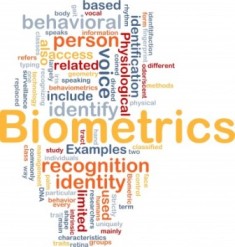Face Recognition Biometrics Which Biometric Facial Recognition Technology Will Work Best for You?
Face recognition biometrics, is becoming a popular choice for various applications. Biometric technology is becoming more widely used today!
Law enforcement departments often use facial recognition to identify known criminals. Homeland security often use face scanning biometrics technology to find known terrorists.
Even large companies are implementing this biometric identification technology, using it for time attendance and tracking purposes. While other biometric security technologies like the biometrics retina scan and iris reading are available, face recognition offers a wide range of security applications, which has made it a popular choice.
Here is a closer look at this specific technology, how it works, and information on different facial recognition biometrics technologies to consider
Face Recognition Biometrics Understanding How it Works

As you look at biometrics facial recognition, you’ll find that this technology works in much the same way as other types of biometric devices, such as the retina scan. First, facial images have to be acquired.
Next, the face images have to be processed by the bio authentication software. After processing, the software extracts unique features and then creates a template of that face that is saved in the system.
It is important to realize that facial recognition biometrics can be limited in several ways. First, you’ll find that lighting can limit this recognition technology, since an under or over exposed image may limit the quality of the template made.
Also, when the information is being scanned, the user will need to offer pictures at several different angles of the face to get the best possible 3d face recognition profile.
However, even though there are constraints that may affect the biometrics face scan, the recognition technology surrounding this specific type of biometrics is only getting better as biometrics manufacturers develop more and more devices some of these limitations may be overcome.
4 Different Facial Recognition Technologies to Consider
Various technologies are available when it comes to facial biometrics. These face recognition technologies vary in the method used to capture unique facial features. Here is a look at 4 of the different facial recognition technologies you may want to consider.
Neural Network Technology - One of the biometrics face scan technologies to consider is known as neural network technology. This technology involves the system trying to learn the specific feature that will work the best for identification and verification. Currently, many algorithms are already in use, helping to accomplish the task at hand. Unique features have weight factors assigned to them, helping systems to figure out which feature will work the best.
Eigenface Technology - Another technology used in face recognition biometrics is Eigenface technology. A database of 2d grayscale face images are used to construct enrollment and verification templates. When individuals are enrolled in the system, faces are reconstructed by using several grayscale, 2d images, which serve as the face recognition template.
Face Feature Analysis - When it comes to face recognition, feature analysis is used most often. Unique features are captured from various areas of the face with this technology. Facial feature positions are also captured. With this technology changes in appearance can be more easily taken into account.
Automatic Face Processing - This is one of the older technologies surrounding facial recognition. The distance and distance ratios between facial features are calculated to create templates for identification and verification.
With various face recognition biometrics technologies available, it is easier than ever to find an security option that will work for your specific application.
Although retina scan and iris reading options may prove to be more accurate, in most cases you’ll find that the biometrics face scan is cheaper and easier to use, providing an excellent option that can be used for various security applications.
Return to the top of Face Recognition Biometrics
Biometric-Security-Devices.com
Free Credit Repair Ebook
The Secret To Better Credit!
Do You Want To Take Your Credit Score To The Next Level?



